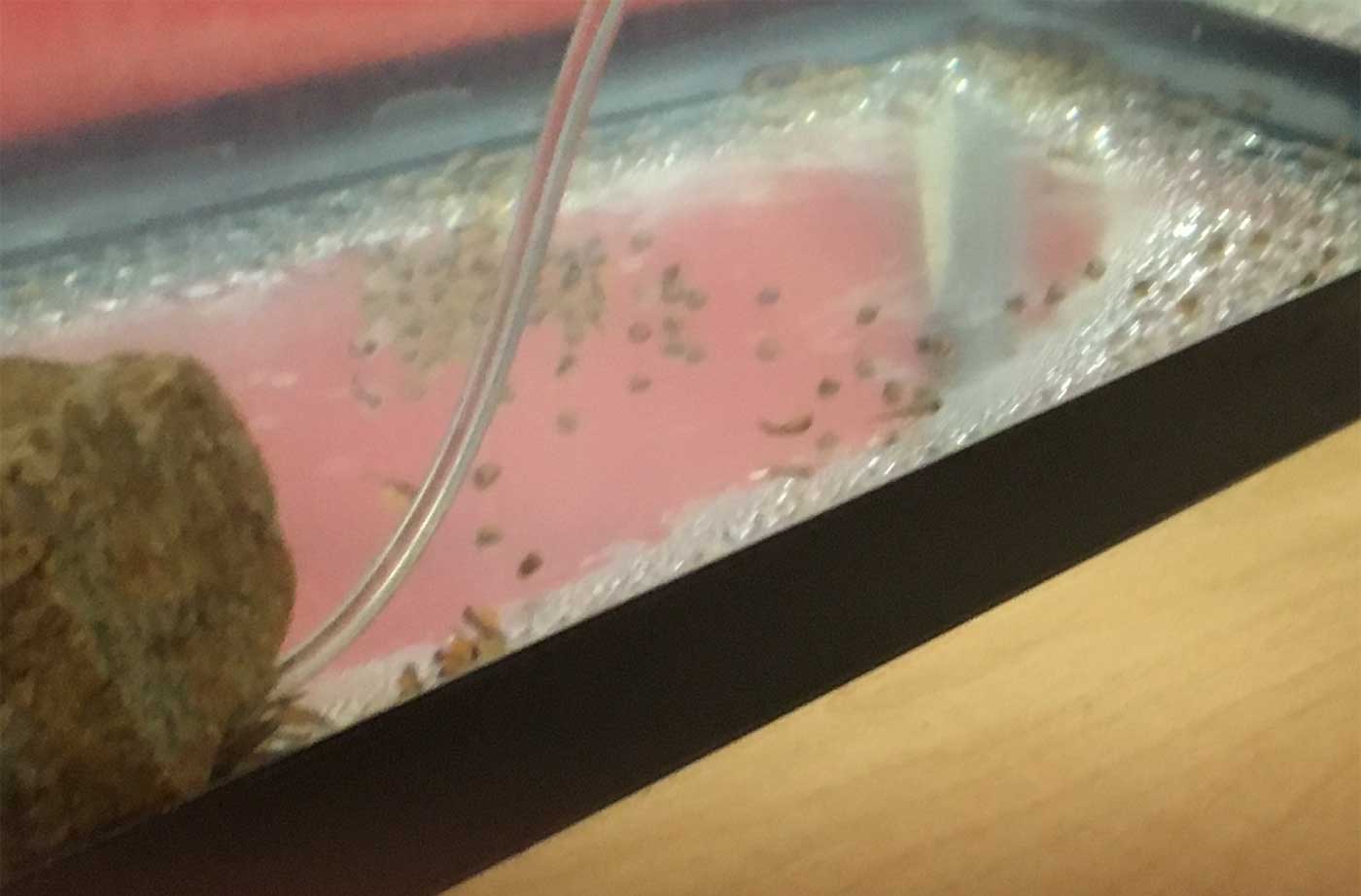Each day, all of us students have duties to do to make sure the fish stay healthy. We need to do daily tests to make sure the PH levels and ammonia levels are safe. We test the PH so that we constantly know the level of acidity, which should stay between 6.8 and 7.8. To test the PH we take a strip and stick it into the tank for 5 seconds, we then remove the strip to wait another 15 seconds until we can compare it to the color chart.
To test the ammonia we take 5 mL of the fish’s water and mix it with eight drops of one chemical from the ammonia test kit and eight drops of the other chemical from the ammonia test kit. We then have to wait five minutes until we can measure the color of the water against the color chart to find out the ammonia levels in the water. The appropriate level for the ammonia is around 1.0. If the ammonia levels are too high we have to change the water. To do this, we usually take out about seven gallons of the fish’s water and replace it with seven fresh gallons. Once the gallons have been poured into the tank we refill the gallons and let them sit for a couple days so that the chlorine will dissipate. These are the daily tasks we have to do to make sure the fish stay healthy.

Trout tank at Mahoney Middle School
After several months of steady progression, the days to release the trout, May 29th and 30th, have arrived! The fry will soon be released into the wild, to go off and live their free live. For months, we have cared for the trout, by changing the temperature of their water from 3 degrees to 13 Celsius over a period of three weeks. We also removed the insulation around their tank so they can have more direct sunshine. After the many months of our care, we know the trout are now ready to live on their own.
We will be very sad to see them go, but we are glad to know that they will be happy in their natural habitat, Trout Brook. On the release days we, the sixth graders of Mahoney Middle School, will take a mini field trip to the brook and release the fry. We hope they will survive successfully on their own against the threat of predators, humans, and natural occurrences they haven’t experienced in their sheltered tank. Hopefully, they will thrive in their new habitat where they belong.
Over our time with the fish, they’ve grown and developed an outstanding amount. When we started off, the fish were merely small, orange eggs. They didn’t swim or eat. We hardly had to take care of them at all. Now that they’ve grown, we care for them every day. We feed them crushed up dried blood worms, which, might I add, are extremely disgusting. They’ve also started excreting waste. Every now and then, we have to remove the waste from the tank using a turkey baster. This waste removal often goes hand in hand with changing out the tank water to cleaner water. Overall, the care methods for the trout have changed drastically from the egg to fry stage and we are looking forward to finally releasing the trout!
We would like to thank the Natural Resource Council of Maine and all other who supported us throughout the many months of our project!
—Julie Pitt, Teacher, Mahoney Middle School, South Portland, Maine











Leave a Reply